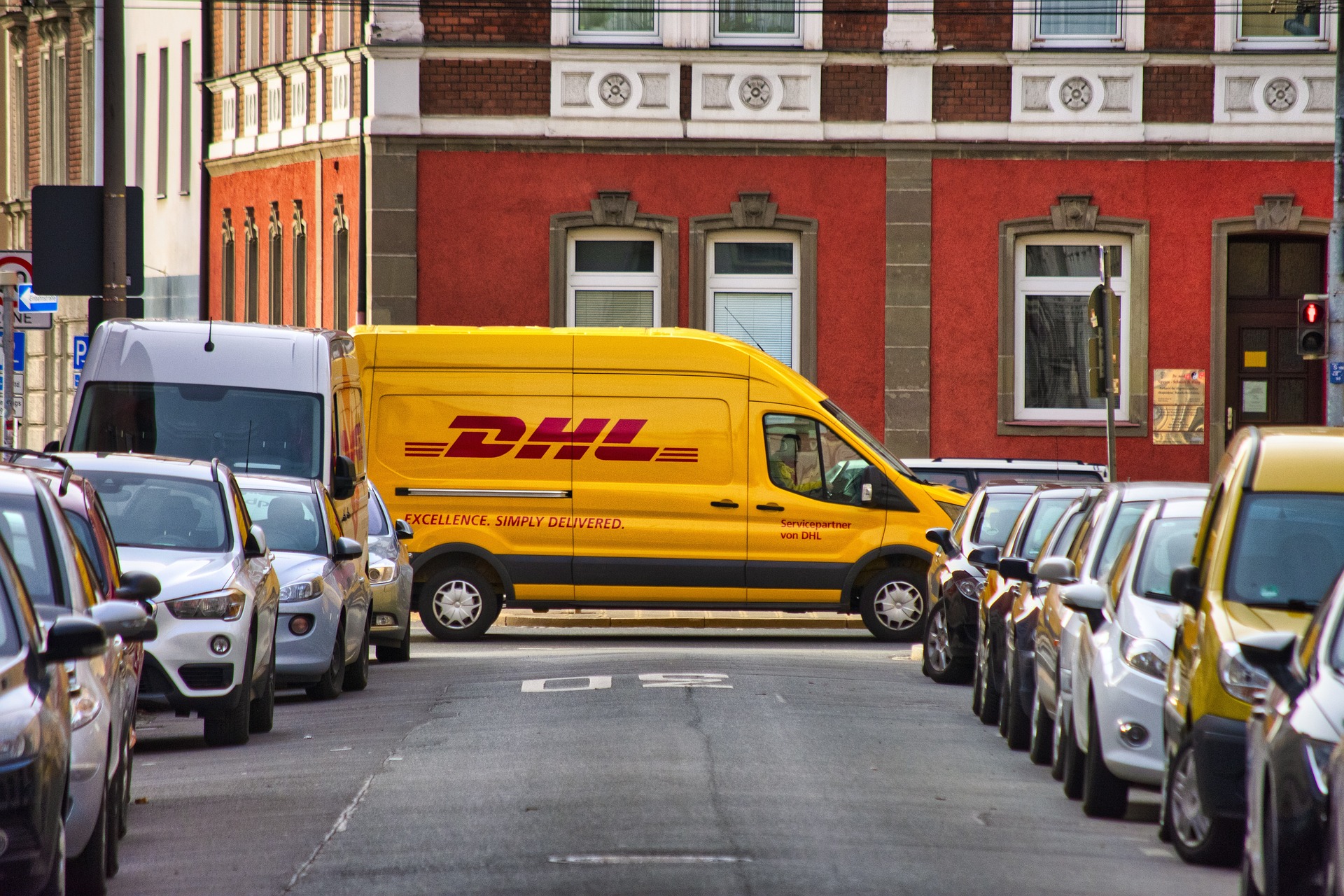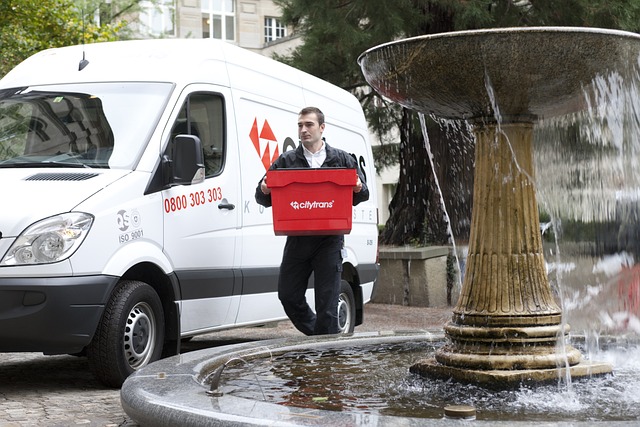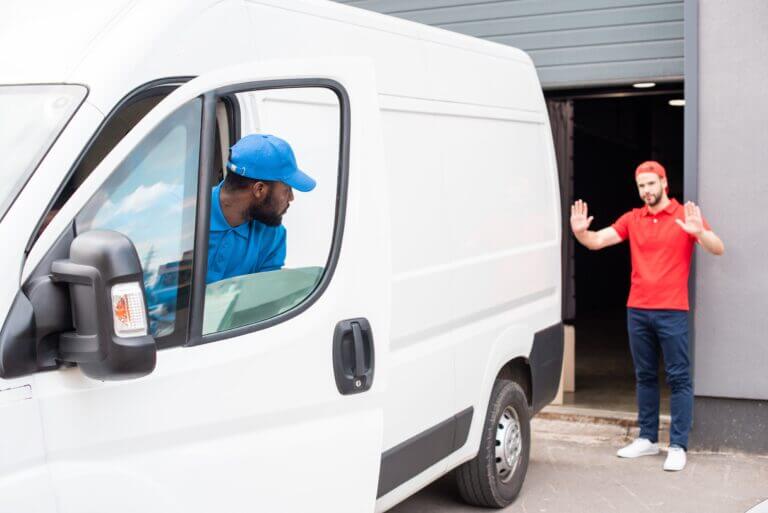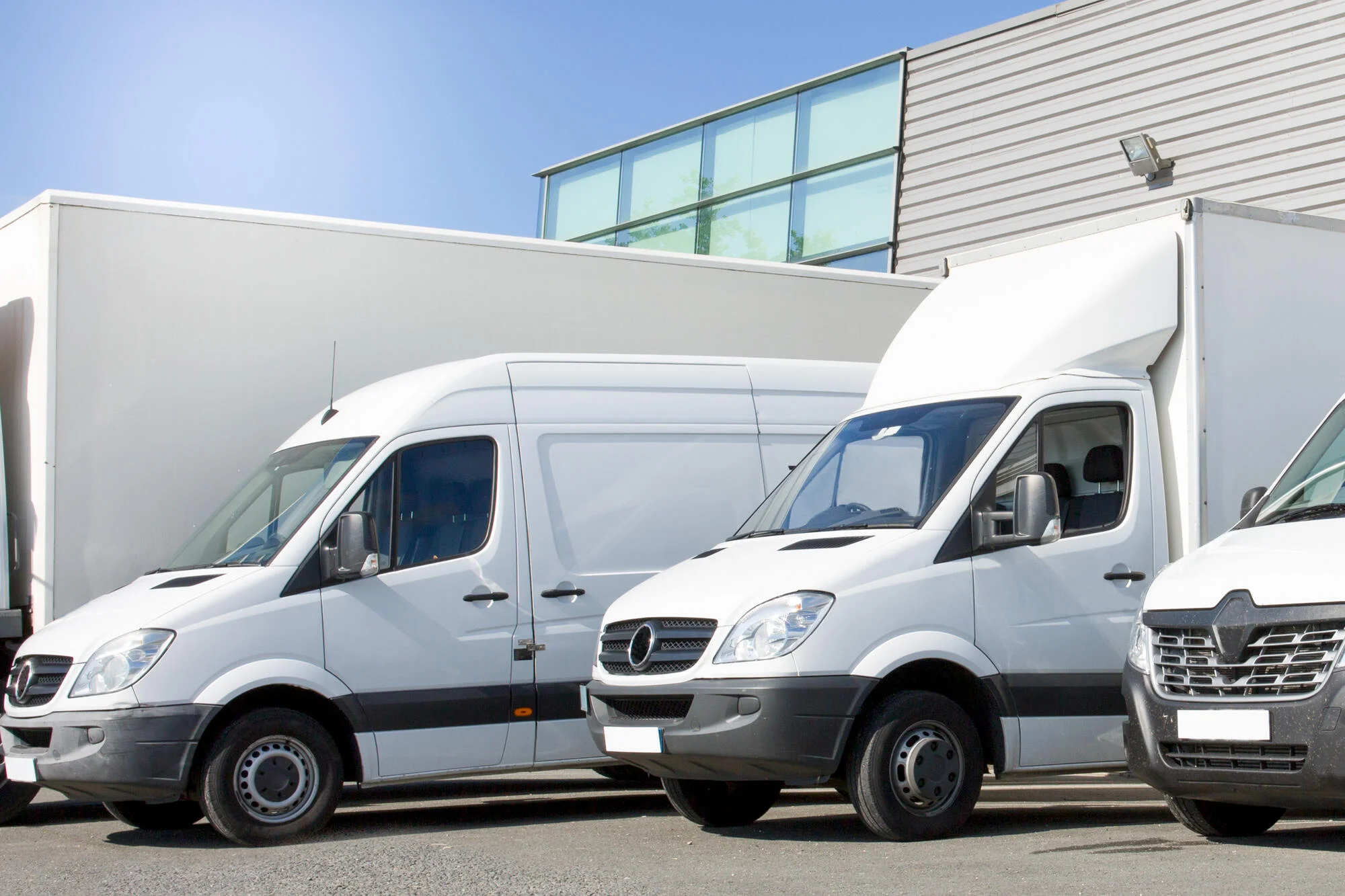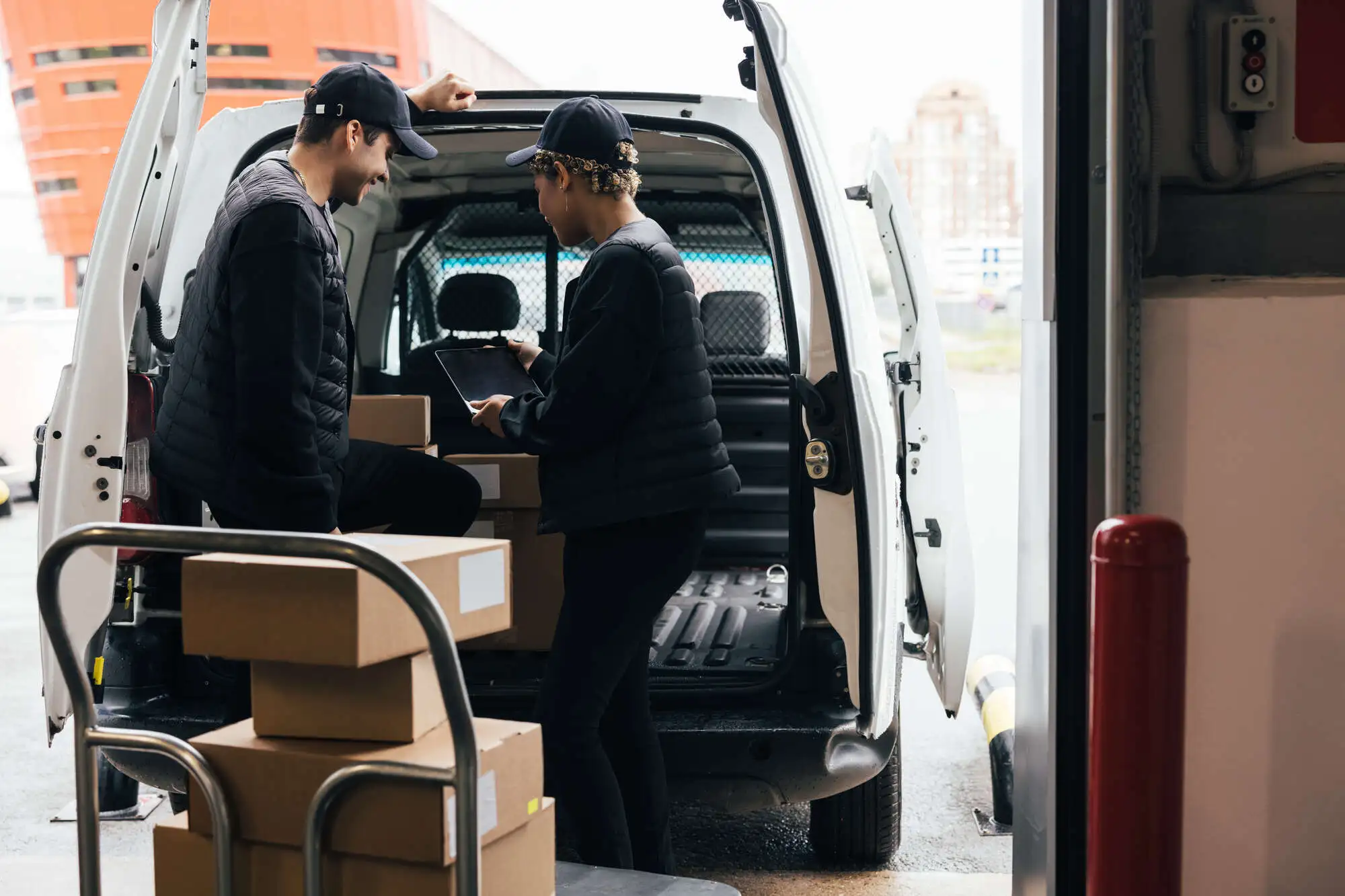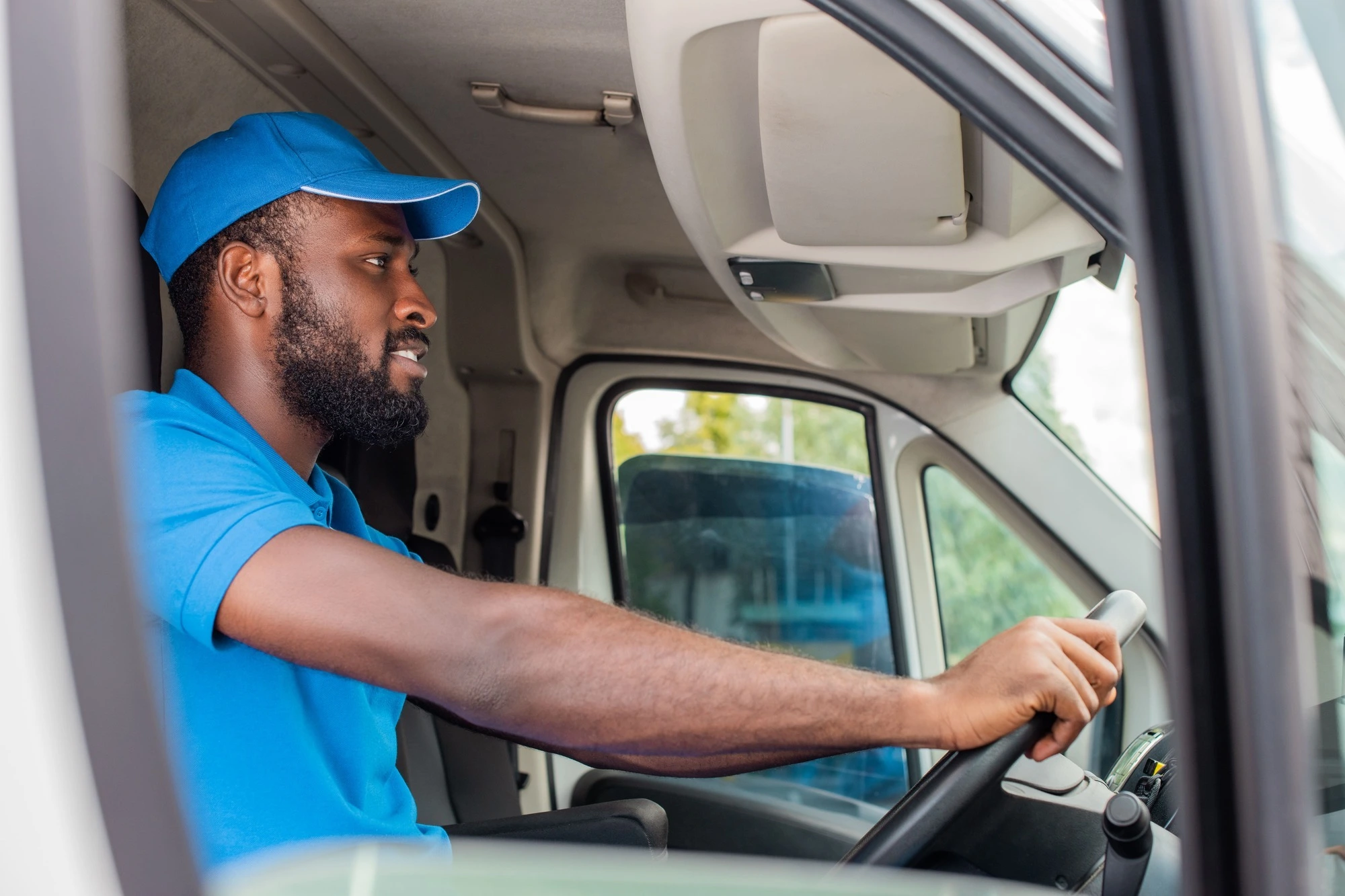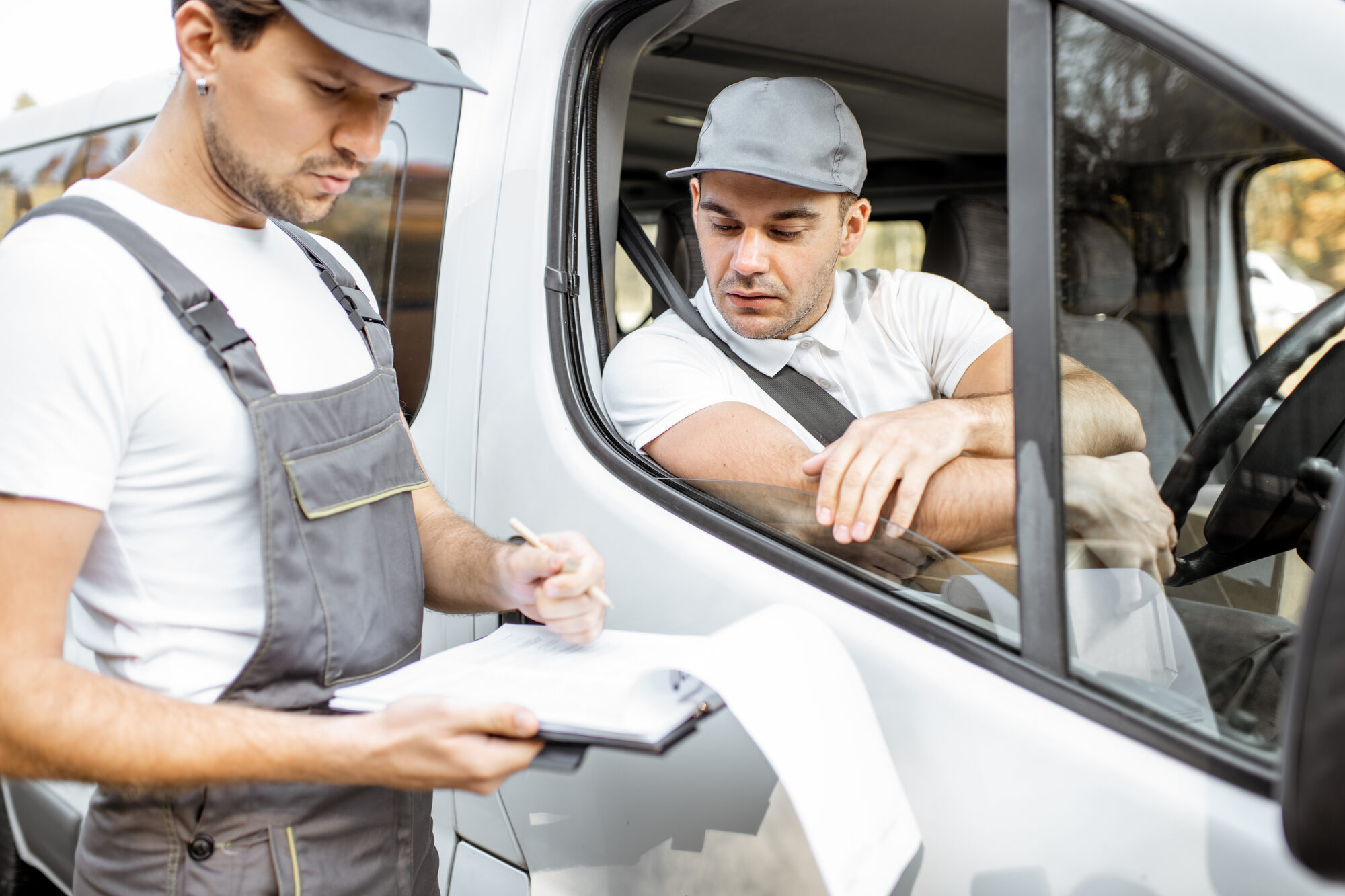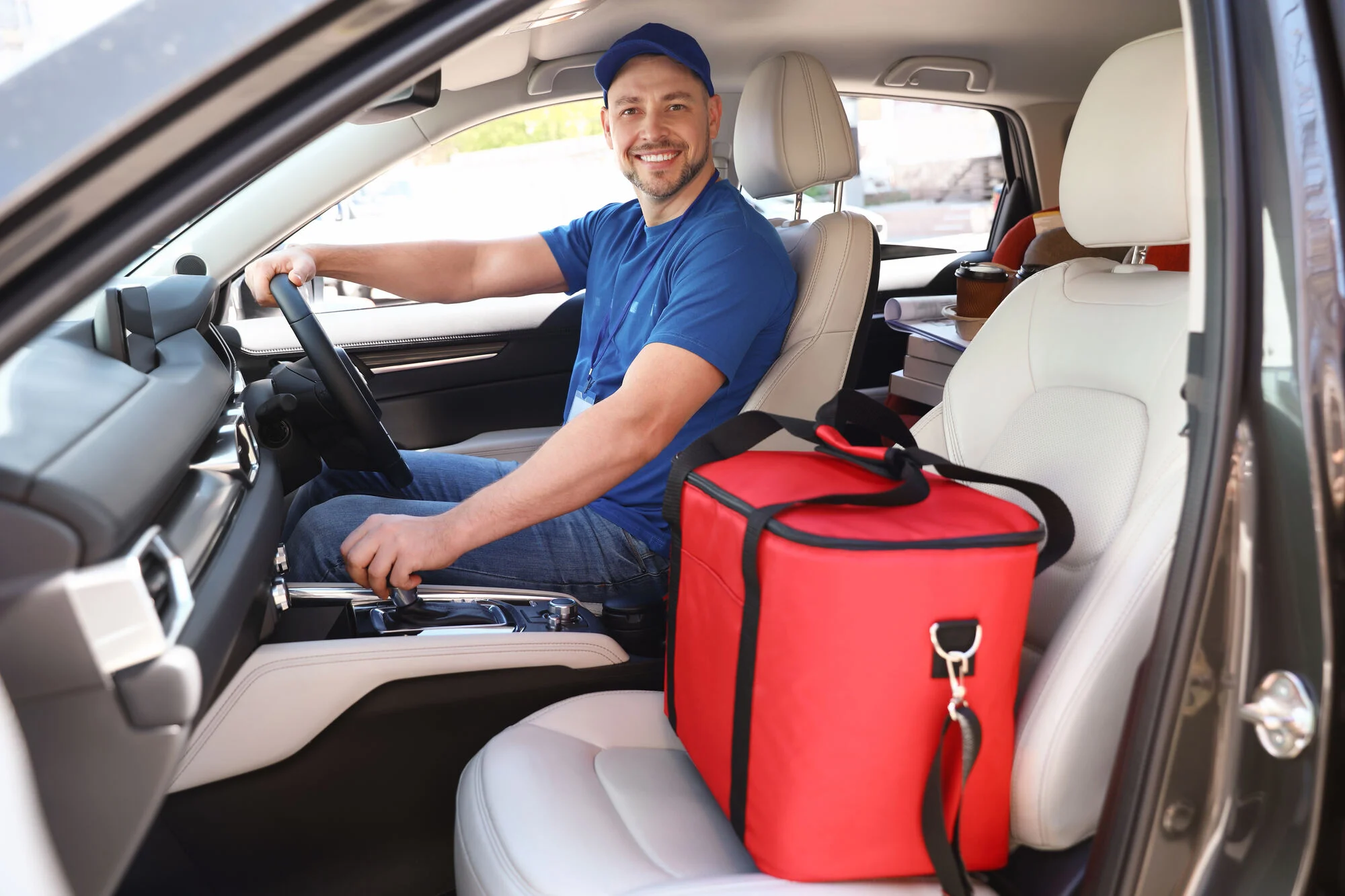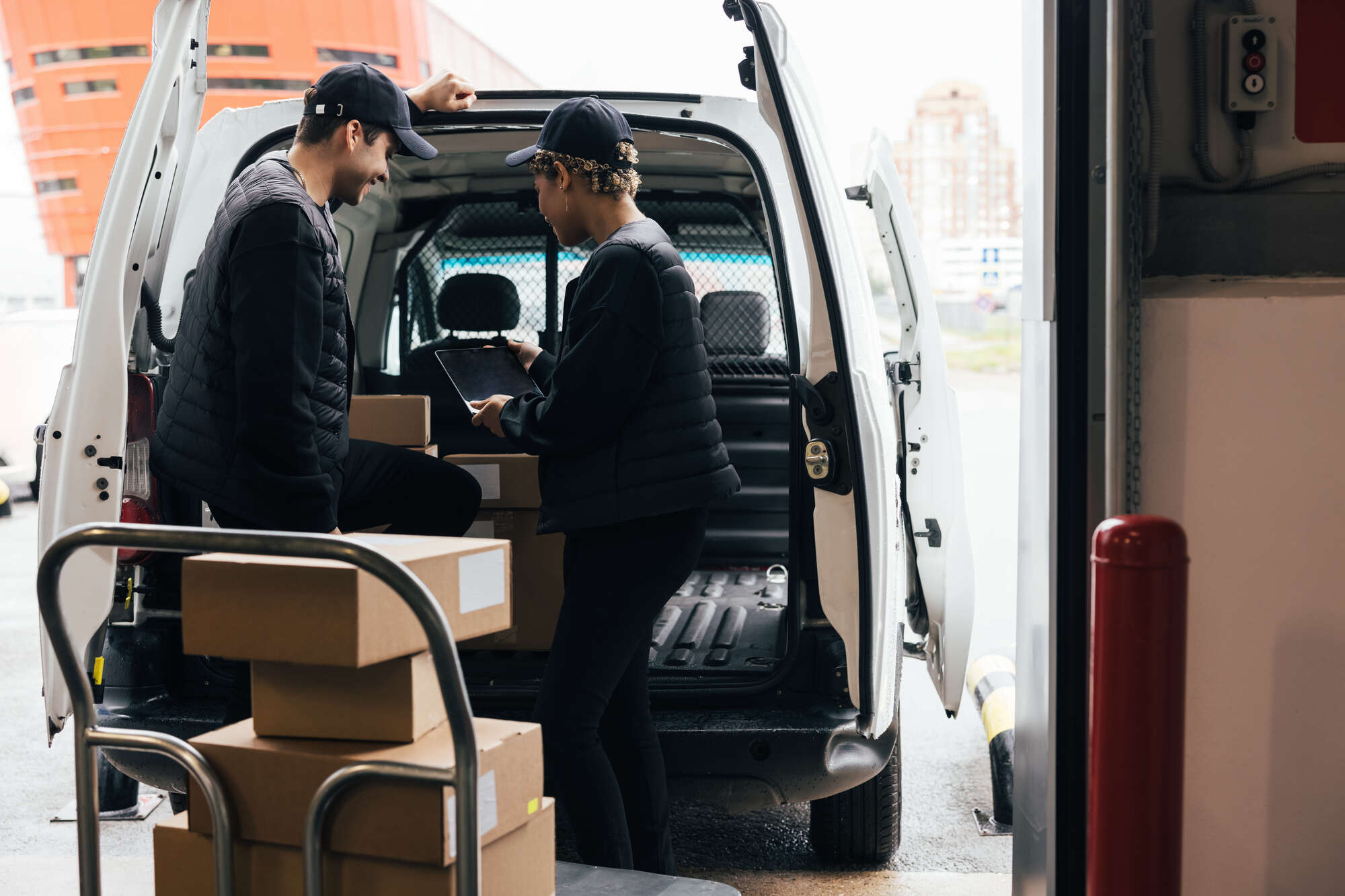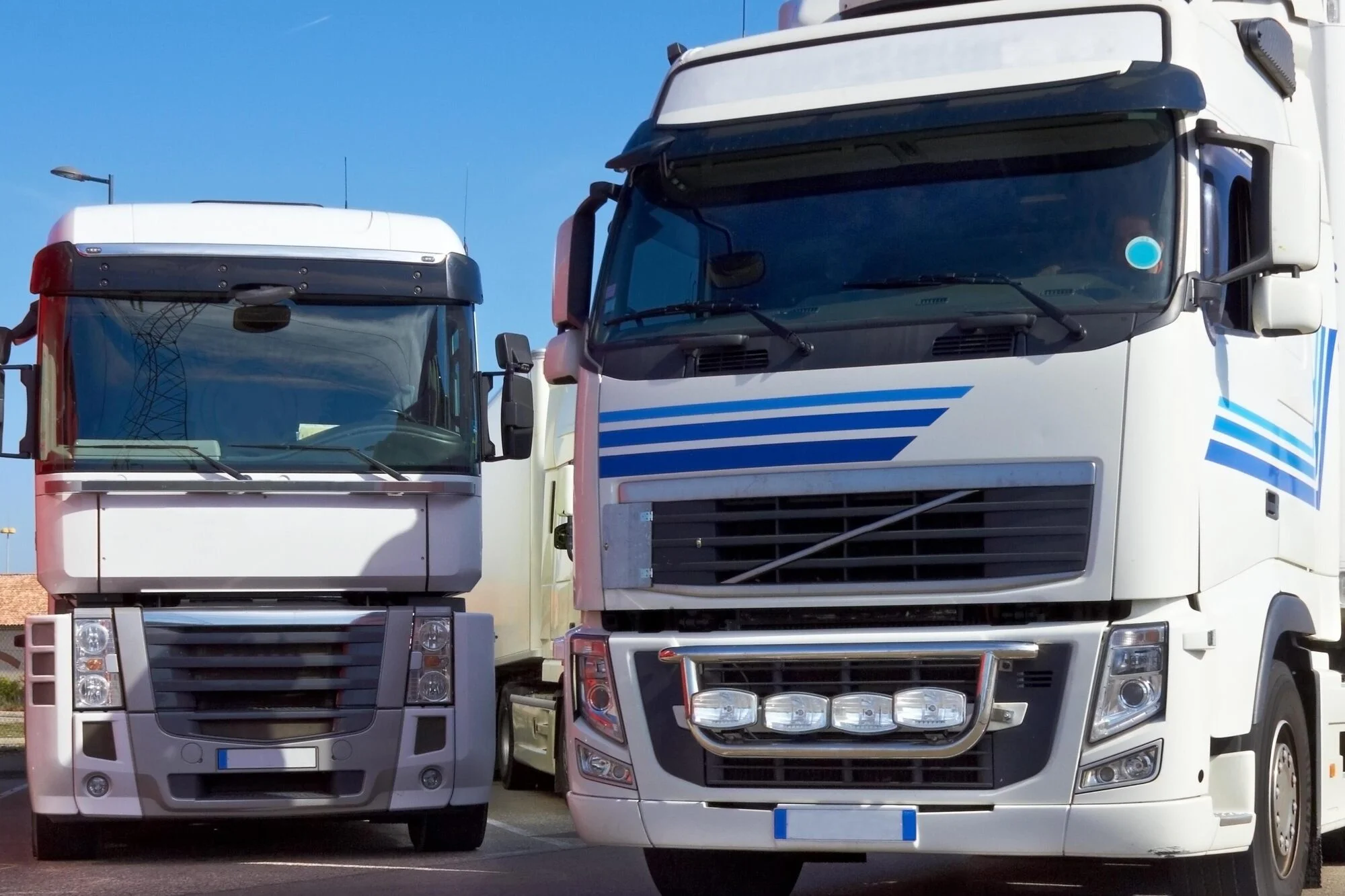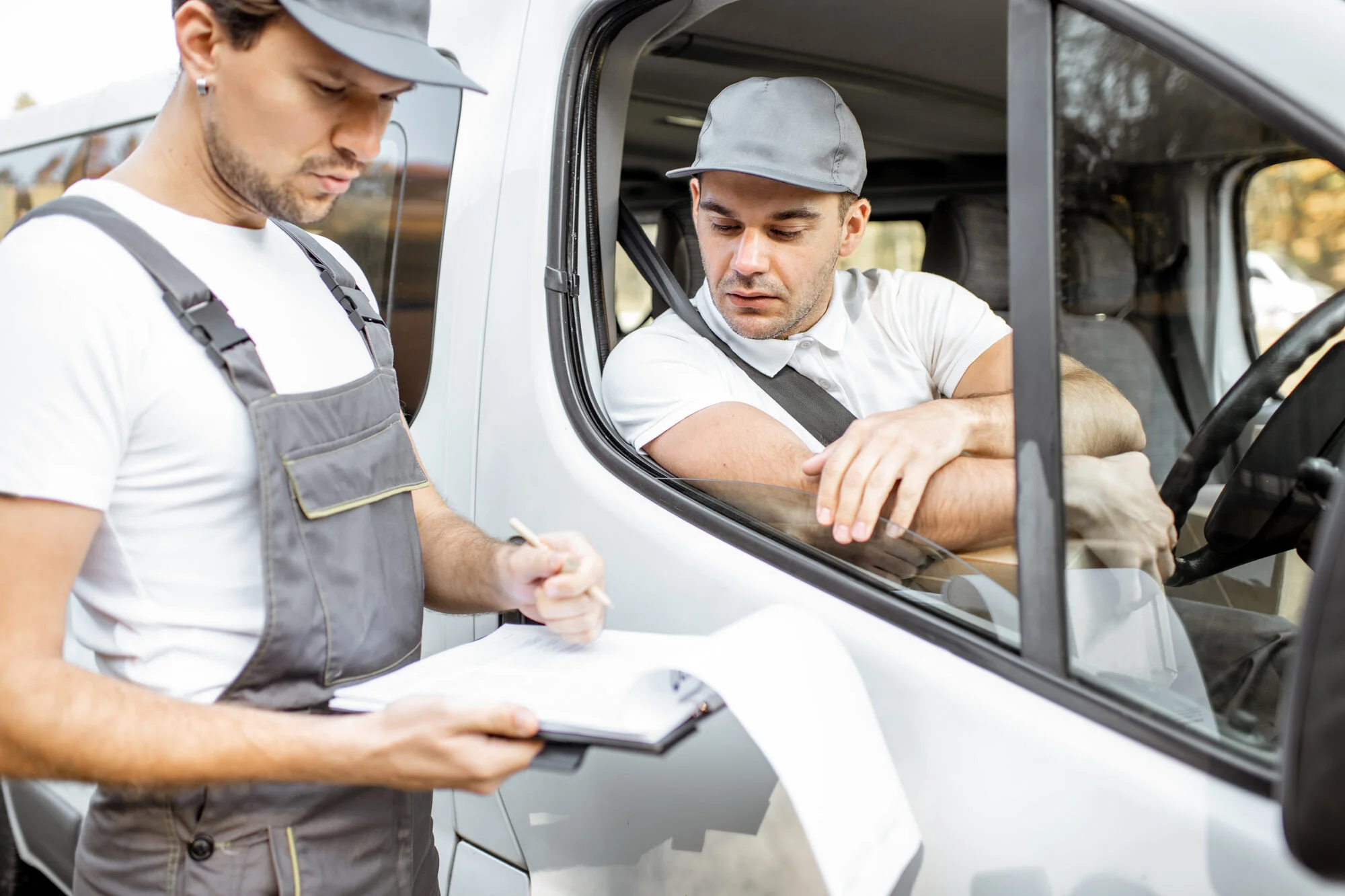Delivery drivers are an essential component for businesses transporting goods and services. Their role in a company can lead to quicker sales, production, and customer retention – meaning their importance shouldn’t be underestimated.
For every driver on the roads, safety is a number one priority. This means sticking to the rules of the highway code, driving in cars that are fit for purpose, and maintaining speed. Sadly, not every driver adheres to the rules of the highway code, with many being caught driving over the speed limit. Therefore, for fleets, insurance is a must.
To explore this further, we at Insurance Revolution have dived into the data surrounding delivery drivers being caught speeding. We have also highlighted important highway code rules these drivers should be aware of and offered advice on the insurance packages available to them.
We did this with the help of publicly available Government data on vehicle speed compliance statistics for LCVs (light commercial vehicles), all rigid HGVs (heavy goods vehicles), and all articulated HGVs available from 2011 and 2021.
With so much data available, we focused on the results between 2019-2021 to examine the most recent results and trends.
Methodology
We have analysed Government data on annually reported vehicle speed compliance statistics between 2011 and 2021. We focused on data ranging between 2019-2021.
We also examined data on delivery vehicles involved in accidents where the speed of the car was a contributory factor between 2013 and 2020.
Highway codes regarding speed limit
While there is never a way to guarantee safety on the roads, complying with speed limits is one way to reduce the chances of an accident and grants the driver more control over their vehicle.
It’s been reported that shockingly, 6,000 speeding tickets are issued every day around the UK with drivers testing the speed limit and increasing the chances of an accident on the road.
The highway code, created to promote road safety and remind drivers of the rules and regulations when operating a vehicle has a number of rules regarding speed limits, some relevant rules are listed below.
Rule 146 emphasises the importance of sticking to speed limits and driving appropriately on different types of roads. You should adapt your driving to the appropriate type and condition of road you are on. In particular:
- do not treat speed limits as a target. It is often not appropriate or safe to drive at the maximum speed limit
- take the road and traffic conditions into account. Be prepared for unexpected or difficult situations, for example, the road being blocked beyond a blind bend. Be prepared to adjust your speed as a precaution
- where there are junctions, be prepared for road users emerging
- in side roads and country lanes look out for unmarked junctions where nobody has priority
- be prepared to stop at traffic control systems, road works, pedestrian crossings or traffic lights as necessary
- try to anticipate what pedestrians and cyclists might do. If pedestrians, particularly children, are looking the other way, they may step out into the road without seeing you.
Rule 152 of the highway code reminds drivers of the importance of maintaining a healthy speed, particularly in residential areas.
On residential streets, you should drive slowly and carefully on streets where there are likely to be pedestrians, cyclists and parked cars. In some areas, a 20 mph (32 km/h) maximum speed limit may be in force. Look out for:
- vehicles emerging from junctions or driveways
- vehicles moving off
- car doors opening
- pedestrians
- children running out from between parked cars
- cyclists and motorcyclists.
Lastly, rule 260 is useful to drivers on motorways, a road type typically used by delivery drivers.
When you can see well ahead and the road conditions are good, you should drive at a steady cruising speed which you and your vehicle can handle safely and is within the speed limit
While every rule of the highway code should be strictly followed, these rules, in particular, are useful reminders of the importance of complying with road speed limits to maintain safety on the roads for all.
Delivery driver speed limit statistics
Now that we’ve reminded ourselves of the important rules regarding speed limits, let’s take a look at the data surrounding delivery drivers being caught over the limit.
The data analyses speeding statistics across four different road types; motorways with a limit of 70mph, single-carriageways (50mph), 30mph speed limit roads, and 20mph speed limit roads.
For each year, the vehicle types observed included cars, LCVs, short buses, long buses, all rigid HGVs, all articulated HGVs, and motorcycles.
On motorways, in 2021 a total of 352,260 vehicles were observed. When analysing the statistics surrounding LCVs on motorways, the average free-flow speed was revealed to be 70mph, right on the limit. This figure was down 1mph from the previous year (71mph in 2020) but increased by 2mph from 2019 (69mph in 2019).
Furthermore, 51% of LCVs observed exceeded the speed limit in 2021 with 13% surpassing it by 10mph or more. In 2020, 55% of LCV drivers were detected over the limit and 49% in 2019. 2020 was the worst year statistically for drivers exceeding 10mph or more with 16% of drivers.
The HGV data is less shocking on motorways, largely due to the heavy vehicle’s inability to reach such high speeds. For all rigid HGVs, the average free-flow speed was 61mph while all articulated HGVs reached an average speed of 55mph. In total, only 2% of HGVs observed in 2021 were caught speeding which was the same statistic from 2020, a slight increase from 1% of drivers in 2019. Across all three years, no HGV drivers were caught exceeding the limit by 10mph or more.
Analysing delivery drivers caught speeding on single-carriageways with a 50mph limit told a different story for HGV drivers. Speeding data was unavailable for LCVs, but the average free-flow speed for these vehicles was 50mph in 2019 and 51mph in both 2020 and 2021, ever so slightly over the limit. Around 40,000 vehicles are observed on these roads annually according to Government data.
For HGVs, the data was a stark contrast to motorways. Despite the average free-flow speed being under the limit; 49 mph in 2020 and 2021 for all rigid HGVs and 48 mph for all articulated HGVs in the same years, a large percentage of these drivers were clocked at a higher speed.
In 2021, 42% of all rigid and 36% of all articulated HGVs exceeded the speed limit on single-carriageways. While no articulated HGVs were caught speeding by 10mph or more, 4% of all rigid vehicles were. These figures were up by a slight amount from the year previous with 41% of all rigid and 35% of all articulated HGVs caught in 2020.
The data highlights a worrying trend of more delivery drivers being caught each year, comparing the data to 2019 exhibits this. 34% of all rigid HGV drivers were caught in 2019 before reaching 41% the next year, for all articulated vehicles the trend is similar with 27% compared to 35% 12 months later.
Moving onto roads with a 30mph speed limit, the statistics indicate a slight decrease in the number of delivery drivers caught over the limit in 2021 compared to previous recordings.
For LCVs, the average free-flow speed was 31mph in 2021 and 2019 with 2020 seeing a slightly higher average of 32mph. For both types of HGVs, this average speed was 30mph across all three years.
Speeding statistics for LCVs display a small improvement in 2021 compared to the two years before. While 55% of LCV drivers were caught speeding in 2019 and 58% in 2020, this figure dropped slightly to 52% in 2021. It is, however, still a worrying statistic. 2020 was the worst year for LCVs surpassing the limit by 10mph or more with 24% of drivers caught speeding, again this figure has decreased a little to 19% in 2021.
A similar pattern was found when examining the data surrounding both HGV types on these 30mph limit roads. For all rigid vehicles, 47% in 2019 and 49% in 2020 were caught speeding, in 2021 this had reduced to 44%, a step in the right direction. 17% of all rigid drivers had been caught driving by 10mph or more over the limit in 2019, 18% in 2020 and 14% in 2021.
Of all articulated HGV drivers, 43% were caught speeding on 30mph limit roads in 2021, this was a 3% decrease from the 46% caught in 2020 while 44% were detected over the limit in 2019. 2020 was the worst year for drivers 10mph or more over the required speed limit with 14%.
The last road type we have data available for are roads with a 20mph speed limit, otherwise known as residential areas. These areas are usually put in place due to the presence of a neighbourhood or school to ensure drivers maintain a safe speed in these family populated areas.
However, this road type yielded the most shocking results yet. For both types of HGVs and LCVs, the average free-flow speed was above 20mph each year between 2019-2021. LCVs averaged a speed of 26mph each year while all rigid HGVs recorded average speeds of 24mph, finally, all articulated vehicles averaged 25mph in 2021 and 2020 while averaging 24mph in 2019.
Shockingly, 85% of LCV drivers observed in 2019 and 86% in both 2020 and 2021 were caught speeding in residential areas. Over half of these drivers every year exceeded the limit by 10mph or more with 54% in 2020 being the most alarming statistic.
Again, HGVs followed a similar pattern with 75% of all rigid vehicles each year being caught risking danger in residential areas due to speeding. 36% of these drivers were over the limit by 10mph or more in 2019 and 37%in both 2020 and 2021.
All articulated HGVs recorded even worse statistics with 82% in 2019, 86% in 2020 and 85% in 2021 caught over the limit of 20mph. In 2020, 51% of these drivers were over the limit by 10mph or more up from 44% in 2019, a dangerous piece of data. This figure dropped to 48% in 2021.
Final thoughts
Delivery drivers are not only putting lives at risk but their livelihoods too, as a result, safe and responsible driving should be a priority. In the event of an accident, we at Insurance Revolution offer several insurance packages depending on delivery drivers’ needs.
This includes policies such as courier, van, motor trade and truck insurance. If you need any further information on the policies we can provide, or would like to receive a quote, look no further than us here at Insurance Revolution. Our experienced team is always on hand to advise you on how fleet insurance could benefit your business and help explore the most suitable policies.

